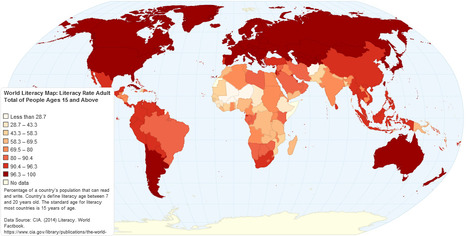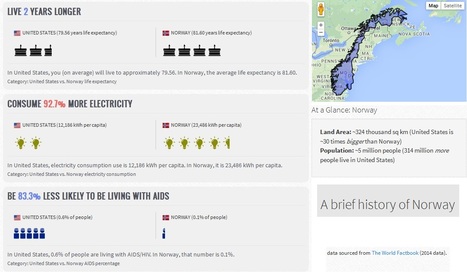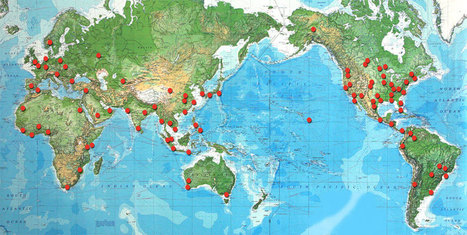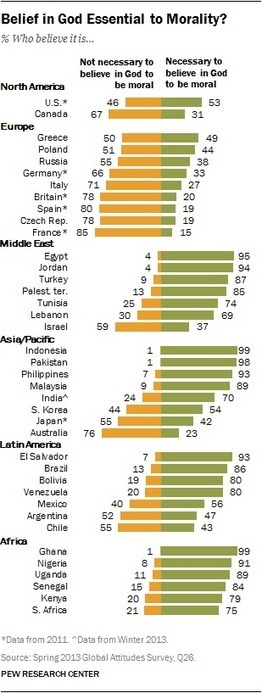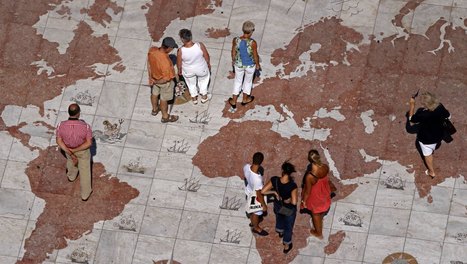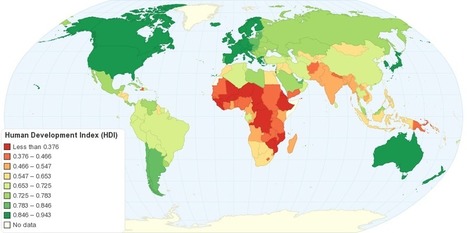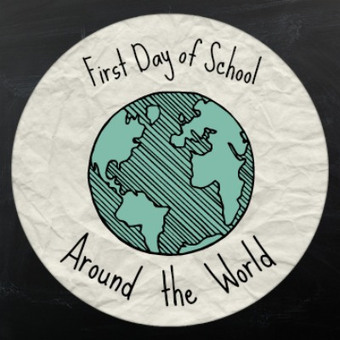The work of the acclaimed chef and writer, who has died at 61, provides a model for a truly inclusive urbanism based on the creativity of all human beings.
Get Started for FREE
Sign up with Facebook Sign up with X
I don't have a Facebook or a X account
 Your new post is loading... Your new post is loading...
 Your new post is loading... Your new post is loading...

Willem Kuypers's curator insight,
December 28, 2016 2:05 AM
De très belle photos à utiliser dans les présentations.

careerpath12's curator insight,
March 11, 2016 1:10 AM
I am torn on how to teach these two ideas about cultures and societies all around the world: People and cultures are different all over the world.People and cultures are the same all over the world.Cultural practices are often so similar, are done in slight different fashion. This photo gallery can create opportunities for our students to 'see' themselves in other cultures while at the same time seeing the richness of global cultural practices. Tags: education, K12, worldwide.
Dee Dee Deeken's curator insight,
August 2, 2015 1:27 PM
My 10 year-old daughter was looking in our atlas a while back (yes, she is my daughter) and in the encyclopedic entry of each country she started noticing that literacy rates were included. She started asking about which regions had higher and lower literacy rates. This became a teaching moment about the power of the map--I explained that all this data can be more easily accessed and seen on a map and this interactive map is what we discovered. We need to help student find the maps and data to answer their questions (and we need to make sure that they are curious enough to ask questions about the way the world works). 
Annenkov's curator insight,
August 5, 2015 4:29 PM
My 10 year-old daughter was looking in our atlas a while back (yes, she is my daughter) and in the encyclopedic entry of each country she started noticing that literacy rates were included. She started asking about which regions had higher and lower literacy rates. This became a teaching moment about the power of the map--I explained that all this data can be more easily accessed and seen on a map and this interactive map is what we discovered. We need to help student find the maps and data to answer their questions (and we need to make sure that they are curious enough to ask questions about the way the world works). 
geographynerd's curator insight,
August 9, 2015 2:21 AM
My 10 year-old daughter was looking in our atlas a while back (yes, she is my daughter) and in the encyclopedic entry of each country she started noticing that literacy rates were included. She started asking about which regions had higher and lower literacy rates. This became a teaching moment about the power of the map--I explained that all this data can be more easily accessed and seen on a map and this interactive map is what we discovered. We need to help student find the maps and data to answer their questions (and we need to make sure that they are curious enough to ask questions about the way the world works).
Norka McAlister's curator insight,
April 25, 2015 5:16 PM
There are a variety of places to choose from when it comes to vacationing, but one of these places may be in your next trip in 2015. All countries have their own attractions. You will find from old cities to modern suburbs to sky-scraping metropolitan cities establishing their place global tourism market. But one thing that shocks me is how the country of Cuba has been open to the tourism business, where for so many years their communist system has been failing and now they seem to be attracted to the tourism business. In many of these countries, building development has stopped for long time but in other places, modern infrastructure brings more tourists to the city. Urbanism plays a big role in how to distribute the cities. Furthermore, cultures, cities, variety of natural landscape, natural beaches, and tradition are some of few points that attract tourism business in the area. However, in some of these places religion, political, and security needs to be addressed and policies must be implemented in order to market these areas as tourist zones. Islamic countries, communist countries, old and modern cities, and even poor countries are all becoming good places to visit in 2015. 
Annabelle Damasco's curator insight,
August 7, 2015 6:48 AM
Most geographers have more than a little bit of wanderlust. Maybe we don't all have the pocketbook for it, but so many people have the desire to explore, travel and see parts of the world that feel as if they are mythical. For students that have the curiosity, it our mission as educators to cultivate that and help them frame the world into a geographic perspective. I've always felt that window-seat flyers are have the seed of a geographer embedded within them...let's make sure those seeds can grow. Tags: place, tourism.

HG Académie de Rennes's curator insight,
January 31, 2015 1:56 AM
Un site d'une grande simplicité d'utilisation bien qu'en anglais. Le principe est de choisir deux pays dans un menu déroulant pour en comparer les principaux indicateurs de développement sous la forme de petites infographies très pédagogiques. Dernière information sur ce site, les statistiques utilisées proviennent des bases de données open source de la CIA américaine. 
Brian Wilk's curator insight,
February 7, 2015 7:51 PM
After studying this comparison tool and using it to find the best of the best and worst of the worst, I picked out some highlights I'd like to share. Monaco is clearly the place to be born, earn, and live. When compared to the USA, the infant mortality rate is 71% less, the life expectancy is 10 years longer @ 84, and you'll earn 62% more money, no doubt because you have ten more years in which to do so. I believe the stats may be skewed a bit in this country comparison as the very rich live there and they have access to the best medical care, and probably don't have very many infants with them when they make the move from elsewhere, hence the low infant mortality rate. Austria is not a bad second choice as you are 33% less likely to be unemployed. On a sobering note, the life expectancy if you live in Namibia is only 52! Yikes, I'm already 53... It's far worse however in Swaziland. The life expectancy is sadly only 50.5 years and you are 44 times more likely to have AIDS than if you lived here. 26.5% of the population has AIDS! Be thankful for where you live and stop complaining, it's far worse on average in nearly all other countries. 
Monika Fleischmann's curator insight,
February 15, 2015 4:59 AM
Seth Dixon's insight:
Did you know that with 1/30th the territory of the United States, Norway still has over 25% more coastline? I didn't either until I compared Norway to the United States using My Life Elsewhere. This site is designed allow United States students to imagine how their lives might be different if they were born in a different part of the world. Students would probably die 21 years earlier if they were born in Liberia and 11 times more likely to have died in infancy. Students would be 43.8% less likely to grow up and be unemployed and have 36.3% less babies if they were born in Taiwan. This side-by-side format is a great way to help students help make these statistics real and meaningful. One major drawback: this site only allows users to compare a country to the United States. If you prefer to have students compare, say Cuba to the United Arab Emirates, I would recommend that you try If It Where My Home.

savvy's curator insight,
September 3, 2014 12:57 PM
This just makes me realize how the world would be if we only had 100 people rather than the billions we have now. |

Jason Schneider's curator insight,
January 26, 2015 7:37 PM
It would make sense that Indonesia is one of the most religious countries in the world being that it has the highest Muslim population. Also, I never thought of Europe as being religious countries which is why I am not surprised that 70% of Europe does not believe that the belief in God needs to be moral. Another reason why I am not surprised is because they are more popular for their ethnic groups such as the french group, italian group and german group. Also, they don't have focused religions. For example, Buddhism was originated in Nepal and worshipped mostly in China, Hinduism was originated in India, Jewish was originated in Israel and Islam was originated in Saudi Arabia and it's practiced mostly in Indonesia and Pakistan. That explains why most parts of Asia (at least southern Asia) has practices specific religions. 
Chris Plummer's curator insight,
January 27, 2015 11:58 PM
Summary- This figure explains the relationship between regions and their morality based on a God. It is evident what in North America is is almost a 50 50 tie between between believing in god is essential for morality. Only is Europe does God seem less important than the rest of the world. There are other countries such as Chile, Argentina, or Australia that have these same beliefs, but for the most part, most countries see a believe in God as an essential to morality.
Insight- In unit 3 we study the distributions of many things, religion included. Why do so many poorer countries have a stronger faith in God than wealthier ones? It may be because if their ethnic backgrounds, but I think there is more to it. I think when a country is poorer, more people reach out to their God for help. I also think that in wealthier countries there are distractions from religion such as video games and other mass produced technologies that get in the way of people researching their faith. 
Ryan Tibari's curator insight,
May 27, 2015 9:55 AM
Unit 3: This article shows the relationship between regions and their morality based on a God. It is evident what in North America is is almost a 50 50 tie between between believing in god is essential for morality. There are other countries such as Chile, Argentina, or Australia that have these same beliefs, but for the most part, most countries see a believe in God as an essential to morality.

Payton Sidney Dinwiddie 's curator insight,
April 14, 2015 6:00 PM
This shows the costums that several other Countries use in north America we cross our legs but in Countries Like Asia disrespectful. In America we view blowing or Noise is normal in Japan that Considered rude 
Roman M's curator insight,
April 16, 2015 12:17 PM
This article shows the different customs on gestures or body language in the world. What we might do is disrespectful in another country. For example, even some as simple as crossing your legs while sitting is common in North America and some European countries. However, it is viewed disrespectful in Asia and the Middle East. RM

Caroline Ivy's curator insight,
May 18, 2015 10:41 AM
This article discusses the Human Development Index (HDI), what it is, and how it is calculated.
This chart displays that the top three spots on the HDI are occupied by Norway, Australia, and the Netherlands respectively, with the USA coming in fourth. As HDI is calculated by comparing aspects like literacy, standard of living, education, and life expectancy, why are two European countries and Australia in the top 3? Something to be looked at is the in-migration of each country. Immigrants arrival in large numbers in some countries can lower HDI if they are refugees or come from a country with a lower HDI, for they may be illiterate, have a low education, and therefore a low life expectancy. With in migration to the US tightly controlled but in constant motion, their HDI could be pulled down to 4th. As Norway and Australia and the Netherlands are not the main destination for refugees, their HDI could be higher.
Cody Price's curator insight,
May 27, 2015 12:49 AM
The HDI is the human development index which ranks countries in many different aspects. The higher the country the more developed and modern it is. The least amount of death and the longest lives are here. It is more stable the higher the country.
This relates to the topic in unit 6 of HDI. this map shows the basic HDIS of the world and the patterns formed by the HDI layout of the world. 
Anna Sasaki's curator insight,
May 27, 2015 2:04 AM
This map shows the Human Development Index around the world. The HDI depends on a set list of variables, ranking them from 1st to last. Nations considered to be "Western" are more developed than nations in regions such as Africa and Asia, although all nations are slowly but steadily developing, improving their Human Development Index ranking. The HDI shows development in nations, although leaving out Inequality factors. This map also allows us to see spatially what regions tend to be more developed as well as developing.

Amanda Morgan's curator insight,
September 18, 2014 10:51 AM
Great video! Very cool to see how far the world has come in regards to globalization. Technology has allowed the people across the globe to immerse themselves in other cultures and good from other parts of the world. |











